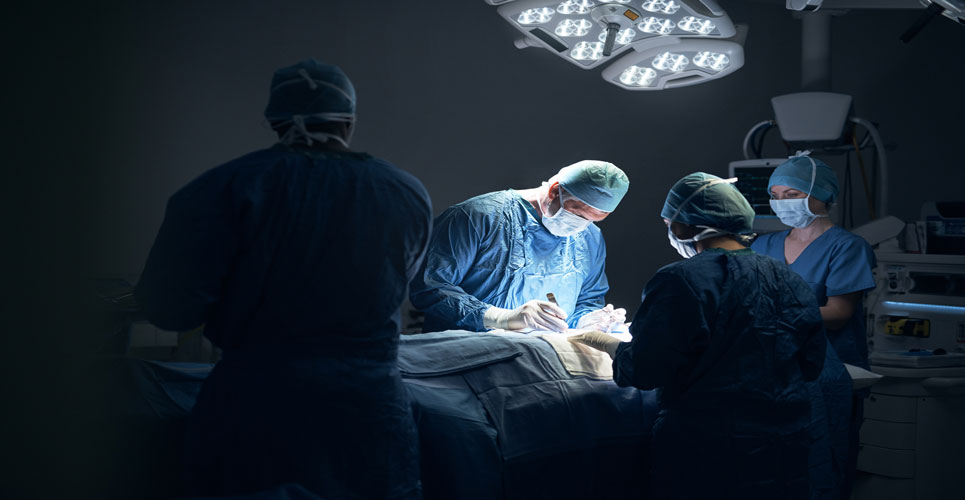Smith & Nephew has announced that the UK’s National Institute for Health and Care Excellence (NICE) has issued a Medtech innovation briefing (MIB) on the use of PICO Single Use Negative Pressure Wound Therapy (sNPWT).
The MIB reports the prophylactic use of PICO as a potentially more effective alternative to standard surgical dressings in the prevention of surgical site complications (SSCs). This is the first and only MIB published by NICE on an NPWT device for preventing SSCs.
Complications from surgical incisions are a significant economic and human burden, costing an approximate £1 billion1 to the NHS each year and contributing to significant morbidity and mortality in the UK and globally. A recent World Union of Wound Healing Societies consensus guidelines reports that up to 60% of surgical site infections (SSIs) are preventable.2
The prophylactic use of the PICO system is proven to be effective in reducing SSCs, including SSIs and dehiscence (wound rupturing) of the surgical incision, in patients at elevated risk of SSCs7.
The PICO dressing has a proprietary AIRLOCK™ Technology that uniformly and consistently delivers NPWT across a surgical incision and the surrounding zone of injury generated naturally by the incision itself3,4. This proprietary feature is designed to help reduce the risk of wound complications by reducing post-operative fluid, swelling and associated tension around a closed surgical incision compared with standard dressings5,6. The combination of these actions helps reduce the risk of surgical wound dehiscence7 and SSIs7, the two most common SSCs.
Evidence shows how the prophylactic use of PICO resulted in fewer complications, and in earlier discharge from hospitals, reducing length of stay, on average by more than 8 days, in closed laparotomy wounds after abdominal surgery8, which has the potential to release bed days for the NHS. In patients undergoing primary hip and knee arthroplasties, it was estimated that care with PICO enabled cost savings of more than £7,000 per high-risk patient (BMI ≥35 or ASA ≥3) compared with care with standard dressings9.
Read more about NICE’s finding here: http://www.smith-nephew.com/PICOMIB
Ms Pauline Whitehouse, Consultant General and Colorectal Surgeon, Worthing Hospital, said, “Following the introduction of PICO into our Trust for moderate- to high-risk incisions, we quickly noticed a significant reduction in superficial surgical site infections. We have now introduced PICO across the Trust and are seeing similar reductions in infective complications for other specialities”.
MIBs are objective information on device and diagnostic technologies to aid local decision-making by clinicians, managers and procurement professionals. They are NICE advice, designed to support NHS and social care commissioners and staff who are considering using new medical devices, and other medical or diagnostic technologies. The briefing will help avoid the need for organisations to produce similar information locally, saving staff time and resources. MIBs are commissioned by NHS England and produced in support of the NHS 5-Year Forward View, specifically as one of a number of steps that will accelerate innovation in new treatments and diagnostics.
As part of the MIB, NICE conducted a thorough review of the published and peer-reviewed data from a variety of meta-analyses and randomised controlled trials (RCTs). The effectiveness of PICO in reducing SSCs has been examined in 10 RCTs and multiple observational studies. A recently published 1,839 patient meta-analysis demonstrated the efficacy of PICO, used prophylactically, significantly reducing SSIs by 58% in closed surgical incisions compared with standard care5.
PICO is suitable for use in both hospital and community settings, and is approved for a number of indications, including surgically closed incision sites.
“NICE MIBs are a great resource for NHS organisations, and are often a reference used by healthcare systems beyond the UK. Today we are delighted to see the NICE MIB support for the prophylactic use of PICO as an effective alternative for clinicians who look to reduce their rates of surgical site complications. This will provide them with the confidence to use PICO for their at-risk patients and procedures, in support of their efforts to achieve better economic and clinical outcomes,” said Paolo Di Vincenzo, Smith & Nephew’s SVP of Advanced Wound Management. “With PICO, we are keeping Smith & Nephew at the forefront of delivering pioneering solutions that continue to improve current standards of care, by reducing the burden and delivering better clinical and economic outcomes. PICO has shown significant clinical results in reducing life-threatening infections on closed surgical incisions, which has contributed significantly to improved patient outcomes, in a cost-effective portable solution”.
References
- Guest J et al, Health economic burden that different wound types impose on the UK’s National Health Service. Int Wound J 2016; doi: 10.1111/iwj.12603
- World Union of Wound Healing Societies (WUWHS) Consensus Document. Closed surgical incision management: understanding the role of NPWT. Wounds International, 2016
- Data on File. DS/17/253/R. Project Opal PICO 7 System Stability Testing – Initial Time Point. October 2017
- Malmsjö M et al. Biological effects of a disposable, canisterless Negative Pressure Wound Therapy system (in-vitro). Eplasty 2014; 14:e15
- Selvaggi F et al., New Advances in Negative Pressure Wound Therapy (NPWT) for Surgical Wounds of Patients Affected with Crohn’s Disease. Surgical Technology International XXIV; 83- 89
- Loveluck et al (2016) Biomechanical modeling of forces applied to closed incision during NPWT eplasty16e20
- Strugala, V. and Martin, R. Meta-analysis of comparative trials evaluating a prophylactic single-use negative pressure wound therapy system for the prevention of surgical site complications. Surgical Infections (2017). DOI 10.1089/sur.2017.156
- O’Leary, Donal Peter et al. 2017. “Prophylactic Negative Pressure Dressing Use in Closed Laparotomy Wounds Following Abdominal Operations.” Annals of Surgery. Jun 265(6): 1082-1086
- Nherera LM, Trueman P, Karlakki SL. Cost-effectiveness analysis of single-use negative pressure wound therapy dressings (sNPWT) to reduce surgical site complications (SSC) in routine primary hip and knee replacements. Wound Repair Regen. April 2017. doi:10.1111/wrr.12530










